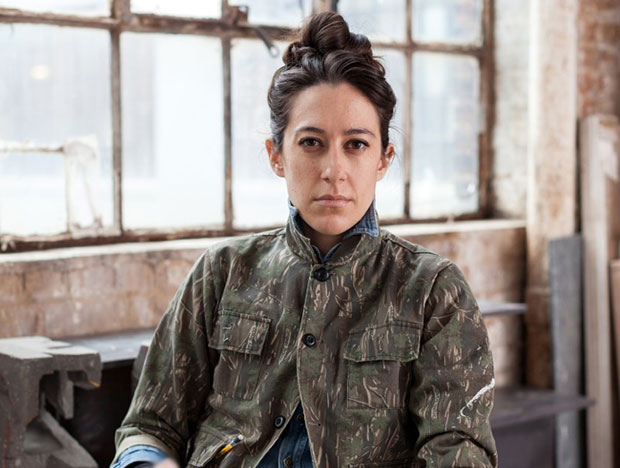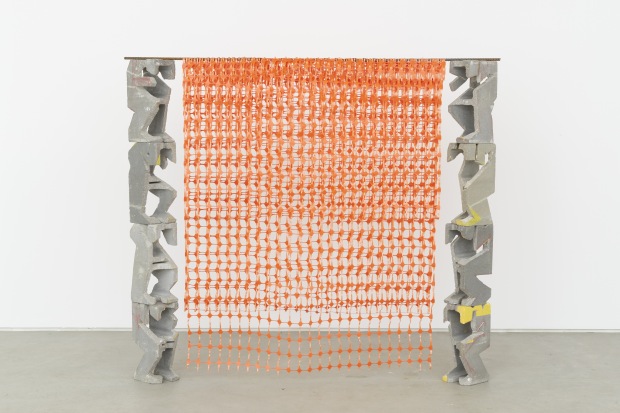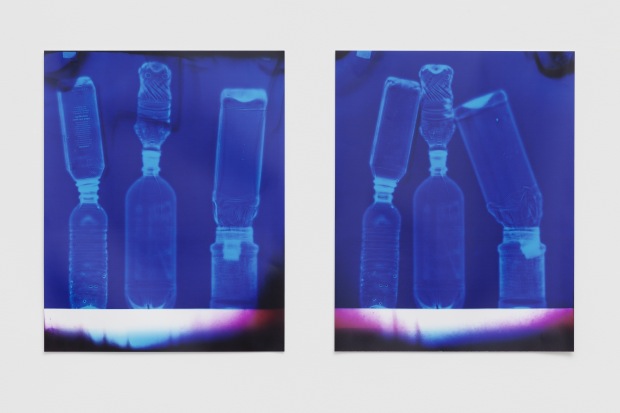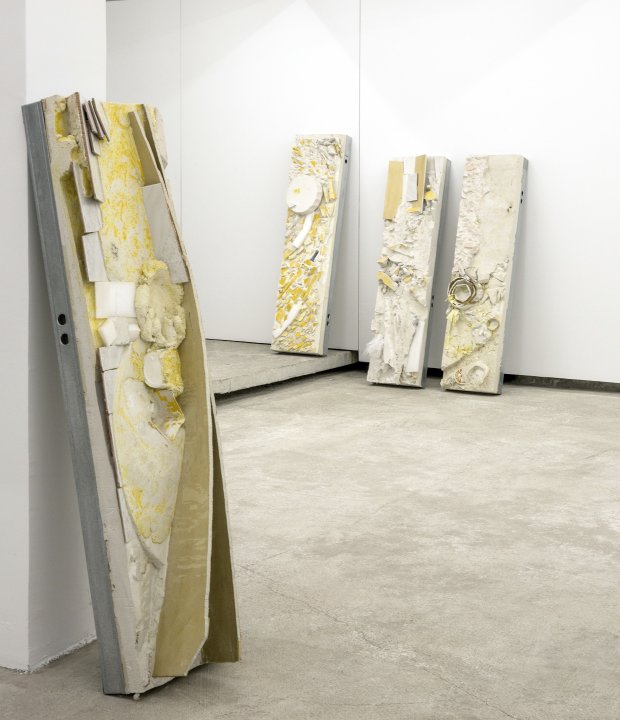
Phaidon’s Frieze NY interviews – Allyson Vieira
The American sculptor uses recycled plastic to create works that bring to mind ancient civilisations
Like almost all of those showing at Frieze New York, the Frieze Projects participant Allyson Vieira is a contemporary artist. Yet there’s also something ancient looking about this young American’s large sculptures, which are fashioned from an intriguing material that is both new and old. Vieria’s contribution to the fair, an outdoor piece at Frieze New York’s north entrance, is built from blocks of industrial waste; materials that, in a canny irony, are often recycled in the manufacture of decorative picture frames. Read on to discover why these blocks appeal to her, how an interest in disposable consumerism and the great land artists of the 1970s have informed her work, and what it is about fallen empires that truly appeals to her.

What are you doing at Frieze? “On the lawn near the north entrance of the fair, I will present a new outdoor sculpture made of baled post-industrial plastics (plastic sheeting and thin foam) compressed into striated, half-ton, cyclopean building blocks. Lying on their sides in a loose line, the blocks will lean on each other in a natural repose, suggesting a collapsed architecture.”
Why are you doing it? “Compressed bales of plastic have attracted me as a building material for years because they suggest the massive scale and solidity of ancient construction, so I’m excited finally to have the opportunity. But, even though they evoke ancient materials in reality these blocks are a 21st-century commodity, a new raw material, an American industrial waste product, collected and baled into blocks for sale by the pound. The blocks I'm using are most often sold to processing plants in China and shipped there all the way from New Jersey, over 7,000 miles as the crow flies, but who knows how long the sea voyage is. Once there, the bales are down-cycled into a lower grade plastic. That plastic is then processed once again and made into cheap consumer goods. Those are then shipped all the way back to the US for sale in big-box stores. The man I bought my bales from said this grade of plastic is mostly used to make decorative picture frames. I became fascinated by this strange cycle of material transformation that both feeds on and feeds into disposable consumerism.”
What does it mean? “This is a question that is impossible to answer. I don't know any artists who make work with a single specific meaning. An artwork should provoke questions not answers. There is no rubric for understanding it. It should exist only in the grey areas between positivist poles and should be able to hold multiple 'meanings' simultaneously. How could it be interesting if it didn't? One person might see this work as a critique of the present, another about the possibility of the future, another about seeing ourselves in the past. I'm not intending to make a judgment about these things. I think of my work more as a series of conjectures or postulations with no fixed answers.”

How does it fit in with your practice? “I often think about cycles of materials and the persistence of elemental forms and structure in architecture and sculpture over time. When considering huge swathes of time, the quick changes drop away. Big gestures and physical facts, such as gravity, remain.
"Using generic, contemporary waste as a building material to create a simple architectural form evocative of a ruin can straddle the liminal moment of the present. For me, the idea of 'now' is like that of 'zero'; both are unknowable because they exist only as theoretical pivot points between the 'real' negative integers of the past and positive integers of the future. So, if the present does not really exist, I can only observe the past and speculate about the future.
"I often think about the relationships between the building materials and sculptural materials of the past, of matter and created vast concentrations of previously non-existent materials. Think of how much material makes a city, and how different that material is from what lies around it. We all know that thousands of years from now our cities will stand as ruins. But in tens of millions of years our cities will not even be ruins, they will be geological strata, crushed and compressed under eons of planetary-scale heat and pressure. What new stone, created from the metamorphosed remains of human civilization, will form the building blocks for the next ascendant species—if it is one that is inclined to build?”

Who are the artists who have inspired you or whose work you admire? “I often find myself drawing a blank when I get asked this question. I might come up with a few artists I've been thinking about that day but forget the ones who have influenced me for years, or vice versa. Hubert Robert, the late 18th, early 19th- century French painter of ruins has always fascinated me with his uncanny ability to negotiate the past, present, and future within his paintings. Of course I think about land artists like Robert Smithson and Michael Heizer. But mostly I spend a lot of time looking at cities, old and new. Buildings under construction in New York rise like mushrooms after a rainstorm; the continuous real estate boom creates a constantly shifting geography. But my favorite thing is walking through the ruins of empires from millennia past; those should keep everyone's hubris in check.”
For more on contemporary sculpture take a look at our great book Sculpture Today. For more on this year's Frieze New York, read our interviews with Frieze Projects artists, Aki Sasamoto, Samara Golden and Pia Camil.